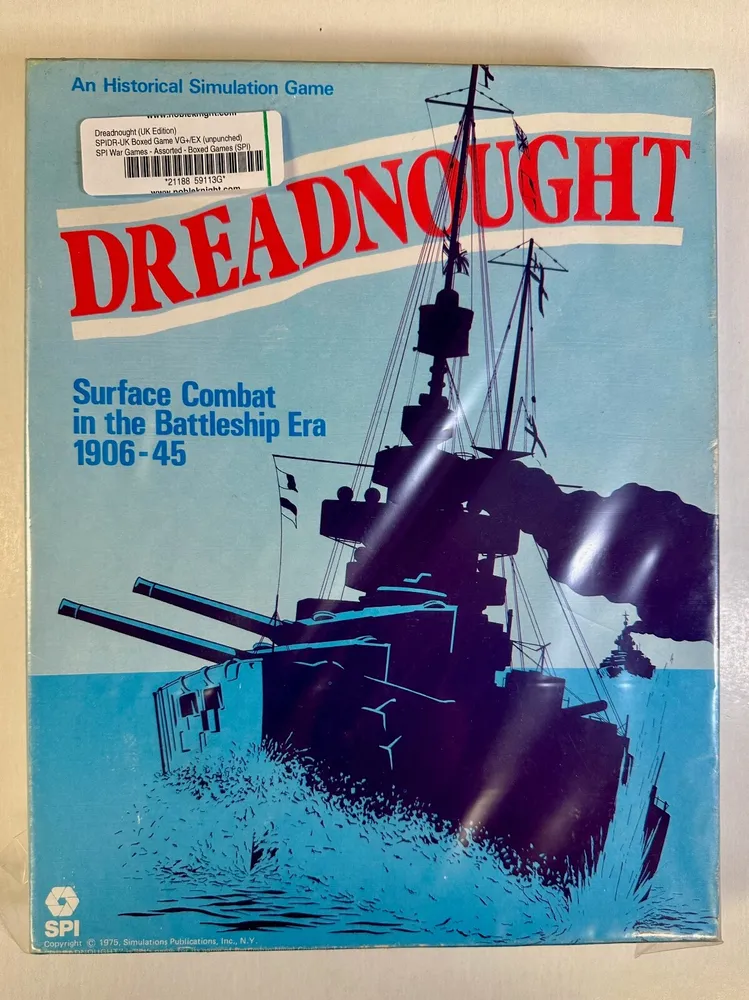Dreadnought (naval wargame)
Dreadnought (naval wargame)
“Dreadnought” is a naval board wargame published by Simulations Publications, Inc. (SPI) in 1975, subtitled “Surface Combat in the Battleship Era, 1906-45”.
Why is Dreadnought (naval wargame) Popular?
“Dreadnought” is popular for several reasons:
– It is a two-player game, which allows for direct competition and strategy between players.
– The game focuses on playability rather than excessive detail, making it fast-moving and exciting.
– The Gameplay Mechanics of Dreadnought (naval wargame) are simple and straightforward, allowing for intricate maneuvers and tactical planning.
Game Components of Dreadnought
How To Setup Dreadnought
To set up the game, players first arrange the hex-gridded map sections, which can be butted together to extend the playing area as needed. Each game includes a set of counters representing various battleships, historical and hypothetical scenarios, and player aid cards. The rules outline the specific placement of ships and the initialization of game components.
Gameplay Mechanics and Game Objective
Player Experience
**Dreadnought** is praised for its balance between playability and detail, making it a fast-moving and tensely exciting game. Players appreciate the well-thought-out scenarios and the ability to choose their own forces for various tasks. The game is noted for its sudden changes in fortune and tension over every salvo, enhancing the overall experience.
Pros
Cons
Personal Thoughts on Dreadnought
**Dreadnought** is an excellent choice for anyone interested in naval warfare and wargaming. It is particularly suited for players who value playability and fast-paced action without sacrificing historical accuracy and tactical depth. The game’s design makes it accessible to players aged 12 and up, and its scenarios offer a rich educational experience for those interested in naval history. However, enthusiasts of highly detailed simulations might find it slightly lacking in complexity. Nonetheless, **Dreadnought** remains a classic and enjoyable addition to any wargamer’s collection.
We are supported by our audience. When you purchase through links on our site, we may earn an affiliate commission, at no extra cost for you. Learn more.

